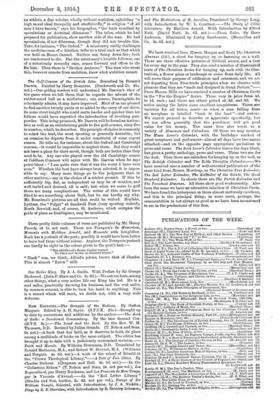The Golf - Ceurses of the British Isles. Described by Bernard Darwin.
Painted by Harry Rountree. (Duckworth and CO. 21s. not.)—Our golfing readers will understand Mr. Darwin's view of ths game when we tell them that he regards tho advent of the rubber-cored ball as a. misfortune ; one course, Sonningdale, he reluctantly admits, it may have improved. Most of us are pleased to find another twenty yards or so added to the carry of our drive. So some stout knight who could smite harder and quicker than his follows would have regretted the introduction of levelling gun- powder. This being premised, Mr. Darwin will be found an instruc- tive as well as an entertaining guide to the golf-courses, sixty-five in number, which he describes. His principle of choice is commonly to. select the best, the most sporting or generally desirable ; but on occasion he departs from it under constraint of some cogent reason. Ho tells us, for instance, about the Oxford and Cambridge oeurses,—it would be impossible to neglect them. But they would not have a place for their merit, though both are better than they used to be. Any one who played over the old Cambridge course at Coldham Common will agree with Mr. Darwin when he Says point-blank: "I am quite sure that it was the worst I have ever seen." Whether the best have always been selected, it is impos- sible to say. Many more things go to the judgment than in other matters,—say in the choice of a cricket ground. If this be sufficiently big, flat, as independent as may be of weather, and well turfed and drained, all is said; but when we come to golf there are many complications. Tho writer of this would have liked to see something about Bath, but he can hardly say, why. Mr. Rountree's pictures are all that could be wished. Hoylake, Lytham, the "Pulpit" at Sandwell Park (very sporting indeed), North Berwict, and, of course, St. Andrews, which occupies the pride of place as frontispiece, may be mentioned.










































































 Previous page
Previous page